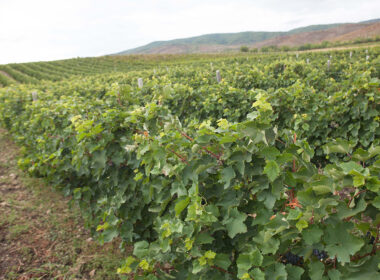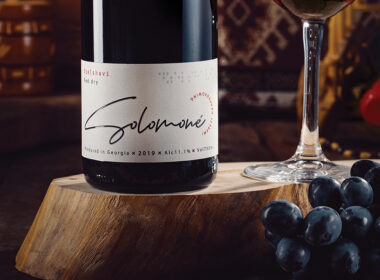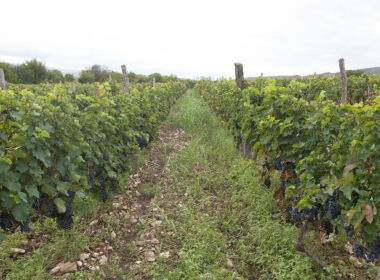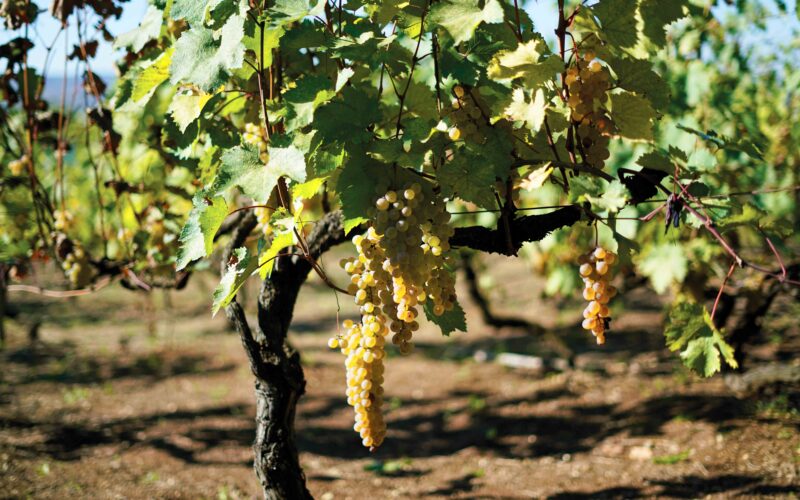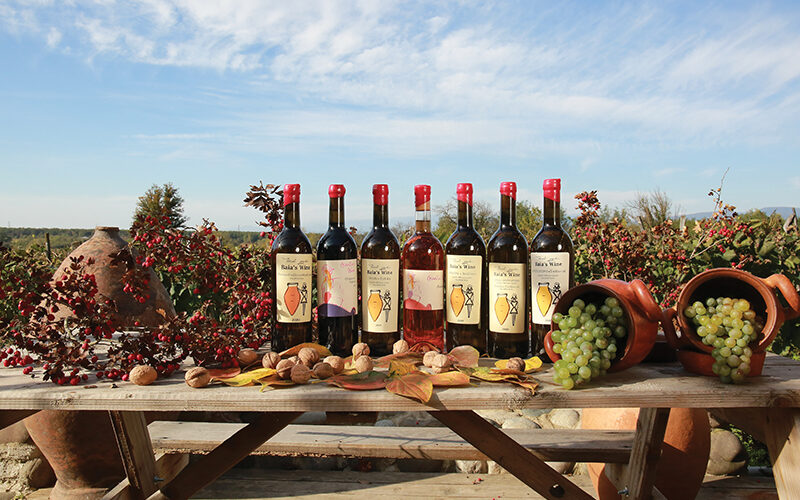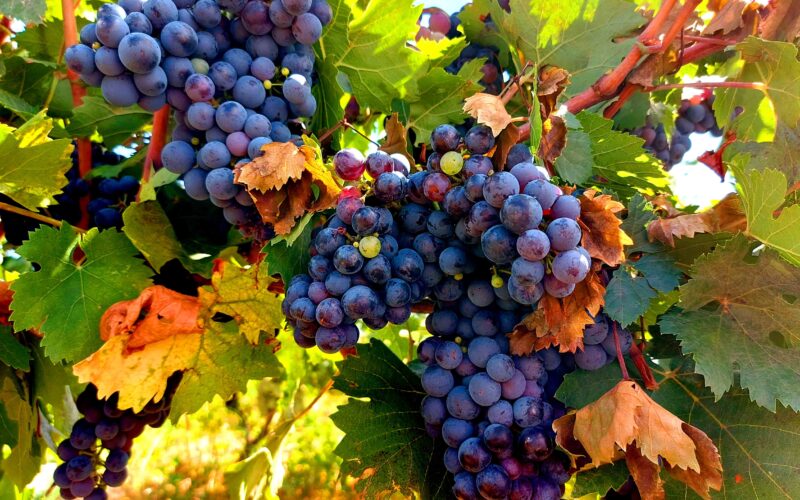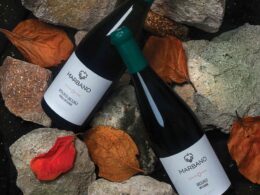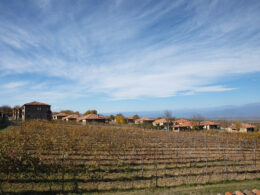ქეთი ჯურხაძე | „იმერული ღვინის ასოციაციის“ დირექტორი: მევენახეობა-მეღვინეობა იმერეთში უხსოვარი დროიდან არსებობს და ყოველთვის შეადგენდა აქაური სამეურნეო საქმიანობის უმთავრეს ნაწილს. მევენახეობის განვითარების შედარებით ფართო პერსპექტივები იმერეთში მე-19 საუკუნის მეორე ნახევრიდან გამოიკვეთა და დარგიც
ეტაპობრივად ვითარდება. იზრდება როგორც ვენახების მოცულობა, ისე მარნების რაოდენობა. მსოფლიო ბაზარიც მეტად ინტერესდება იმერული ღვინოებით, მათი განსაკუთრებული, ხალასი გემოებით, ყვავილებისა და ციტრუსის დაუვიწყარი არომატებით.
რამდენიმე წელია, იმერეთში მივიწყებული ყურძნის ჯიშების აღდგენაც დაიწყეს და მათგან ღვინის წარმოებაც. გარდა ისეთი ცნობილი ყურძნის ჯიშებისა, როგორიც ციცქა, ცოლიკოური, კრახუნა და ოცხანური საფერეა, ბაზარზე გამოჩნდა მივიწყებული ძელშავი, კუნძა და მგალობლიშვილი. დღეს, ამ იშვიათი ჯიშებიდან ყველაზე ცნობილი სწორედ ძელშავია. მისგან დაყენებული ღვინოები ადგილობრივ და საერთაშორისო კონკურსებზე ოქროსა და ვერცხლის მედლებით ჯილდოვდება, რაც ნათლად გვაჩვენებს იმერეთის რეგიონისა და მისი იშვიათი ყურძნის ჯიშებისაგან წარმოებული ღვინოების სამომავლო პერსპექტივას.
წელს, დიდ ბრიტანეთში ჩატარებულ კონკურსზე Turkish Wine Challenge, სადაც ჟურის წევრები საერთაშორისო ღვინის მაგისტრები და ექსპერტები იყვნენ, ღვინის კომპანია „სოლომონეს“ ძელშავი ვერცხლის მედლით დაჯილდოვდა. ეს ღვინო, დღეს უკვე წარმატებით იყიდება ბრიტანეთის ბაზარზე.
წელსვე, „ქვევრის ღვინის საერთაშორისო კონკურსზე“, რომელიც ღვინის იტალიელ ექსპერტებთან ერთად ჩატარდა, მარანი „ზოდის“ ძელშავმა ვერცხლის მედალი მოიპოვა.
ძელშავი იშვიათი ყუძნის ჯიშია და მისგან დაყენებული ღვინოც განსაკუთრებულია – მსუბუქი, კენკრისა და შავი ქლიავის არომატებით, გემოში რბილი და დახვეწილი. ეს არის ღვინო, რომელიც თავს აუცილებლად დიდხანს დაგამახსოვრებთ.
ვფიქრობ, იმერეთი თავისი უნიკალური და იშვიათი ყურძნის ჯიშებით ბევრ სიახლეს შესთავაზებს მსოფლიო ღვინის ბაზარს და თავის ადგილსაც დაიმკვიდრებს მეღვინეობის ინდუსტრიაში.
ირმა მდინარაძე | სოფლის მეურნეობის აკადემიური დოქტორი, ასოცირებული პროფესორი. სსიპ ღვინის ეროვნული სააგენტოს მევენახეობა-მეღვინეობის ანალიზისა და რეგულირების დეპარტამენტის მთავარი სპეციალისტი: იმერეთი მევენახეობა-მეღვინეობის ერთ-ერთი მეტად ორიგინალური, საინტერესო და გამორჩეული რეგიონია, რომელიც ხასიათდება რელიეფის, აგროეკოლოგიური პირობების, მიკროზონებისა და ვაზის ჯიშების ფართო მრავალფეროვნებით. სამეცნიერო ლიტერატურის (საქართველოს ამპელოგრაფია – ნ. კეცხოველი, დ. ტაბიძე, მ. რამიშვილი, 1960) თანახმად, იმერეთის რეგიონს მიეკუთვნება ვაზის ადგილობრივი 85 ავტოქთონური ჯიში. თუმცა, დღევანდელი მდგომარეობით, იმერეთის მევენახეობა-მეღვინეობის ზონაში უპირატესად გამოკვეთილია ვაზის შემდეგი წამყვანი ჯიშები:
ცოლიკოური | სინონიმები: ობჩური ცოლიკოური, ცოლიკაური, მელქოს ცოლიკოური, კოხიძის ცოლიკოური, კობახიძის ცოლიკოური.
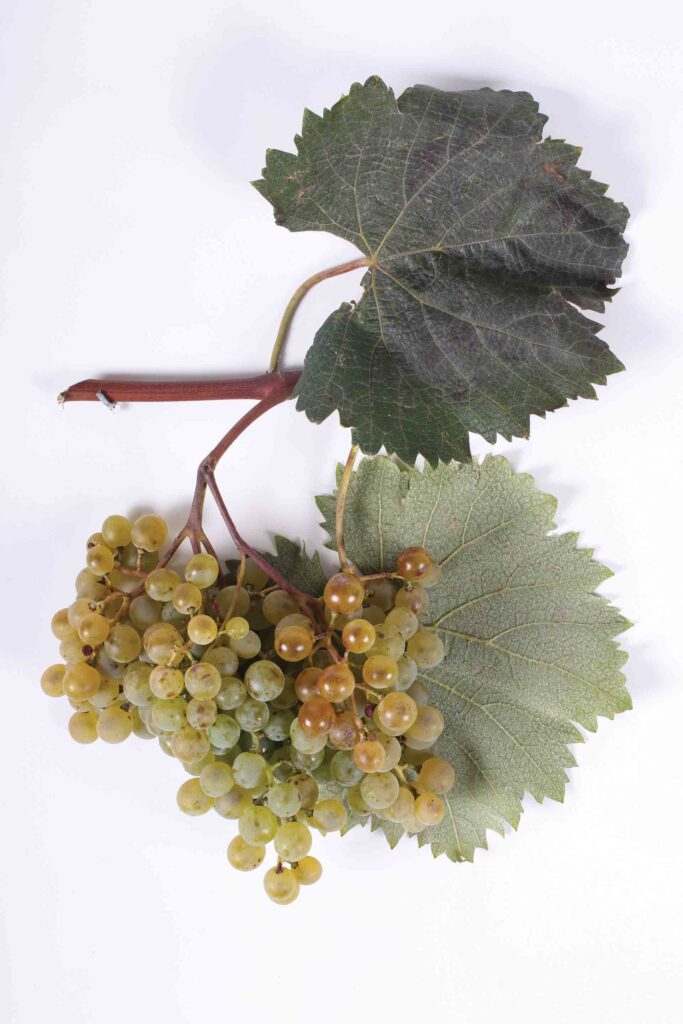
ცოლიკოური იმერეთის ადგილობრივი თეთრყურძნიანი ვაზის წამყვანი ჯიშია, რომელიც ფართოდ არის გავრცელებული არამარტო იმერეთის მევენახეობა-მეღვინეობის ზონაში, არამედ მთელ დასავლეთ საქართველოში (რაჭა-ლეჩხუმი, გურია, სამეგრელო, აჭარა და აფხაზეთი). ჯიში ხასიათდება საშუალო ან საშუალოზე მაღალი მოსავლიანობით (საშუალოდ 7-10 ტ/ჰა), ზოგიერთი სოკოვანი დაავადებების – ჭრაქის – მიმართ გარკვეული გამძლეობით და საგვიანო სიმწიფის პერიოდით. ცოლიკოურის სიმწიფის პერიოდი, დასავლეთ საქართველოში, უპირატესად ოქტომბრის მეორე ნახევრიდან დგება. ნიშანდობლივია, რომ ყურძნის წვენში, ზონების მიხედვით, შაქრიანობა 19-25 %, ხოლო მჟავიანობა 7,5-9,5 გ/ლ-ის ფარგლებშია.
ცოლიკოური მაღალი ხარისხის საღვინე ვაზის ჯიშია, რომლისგანაც შესაძლებელია დამზადდეს ფართო სპექტრის ღვინოები, როგორც კლასიკური (ევროპული), ისე იმერული ტექნოლოგიით. აღსანიშნავია, რომ ცოლიკოურისგან მზადდება ადგილწარმოშობის დასახელების ორიგინალური ღვინოები: მშრალი – „სვირი“ (ციცქასა და კრახუნასთან ერთად) და ნახევრადტკბილი – „ტვიში“.
ციცქა | სინონიმები: შანთი, მამალი ციცქა
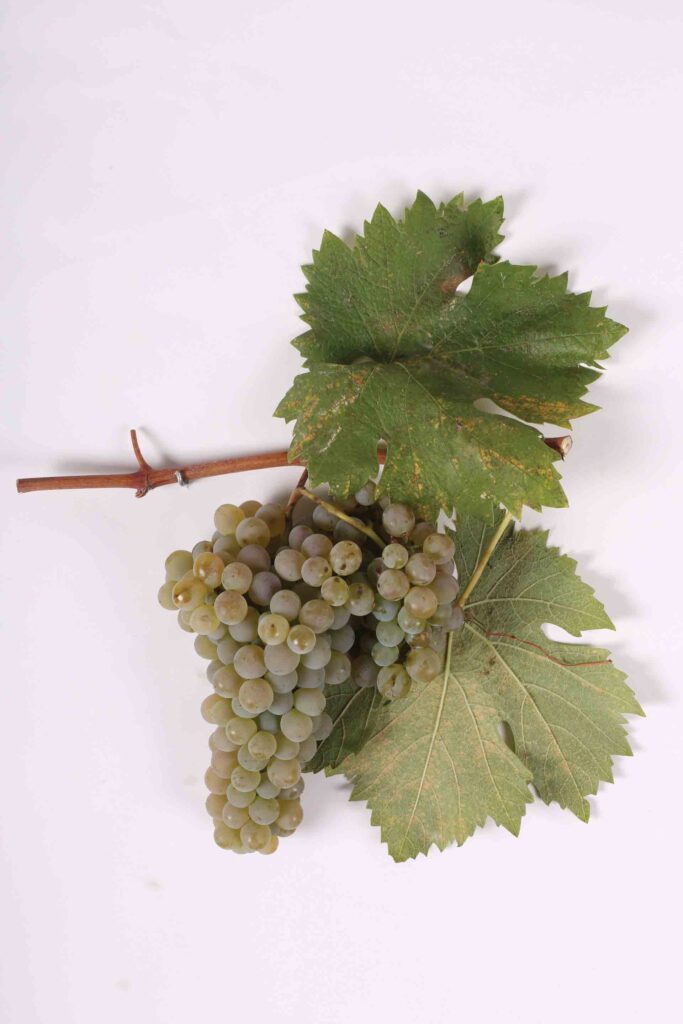
ციცქა ქართული ადგილობრივი თეთრყურძნიანი ვაზის ჯიშია, მიეკუთვნება იმერეთის ვაზის ჯიშთა ჯგუფს და გავრცელებულია იმერეთის ზონაში. ცნობილი ისტორიკოსი ივანე ჯავახიშვილი მოცემული ჯიშის დასახელებას უკავშირებს მისი სავარაუდო წარმოშობის სოფლების – ციცხე, ციცქიურის – სახელწოდებებს. ვაზის ეს ჯიში ხასიათდება საშუალო ან საშუალოზე მაღალი მოსავლიანობით (საშუალოდ 6-9 ტ/ჰა) და საგვიანო სიმწიფით. ციცქას სიმწიფის პერიოდი, იმერეთის ზონაში, ოქტომბრის მეორე ნახევრიდან დგება. ყურძნის წვენში შაქრიანობა 18-25 %, ხოლო მჟავიანობა 6,9-10,5 გ/ლ ფარგლებშია.
ციცქა მაღალი ხარისხის საღვინე ვაზის ჯიშია, მისგან მზადდება ღვინოები, როგორც კლასიკური (ევროპული), ისე იმერული ტექნოლოგიით. ღვინო გამოირჩევა ნაზი და ჰარმონიული გემოთი, სიხალისით. იგი საქართველოში ერთ-ერთ მიზნობრივ ჯიშს წარმოადგენს ცქრიალა ღვინოების წარმოების მიმართულებით. ციცქასგან ამზადებენ ადგილწარმოშობის დასახელების ღვინო “სვირს” (ცოლიკოურთან და კრახუნასთან ერთად).
კრახუნა
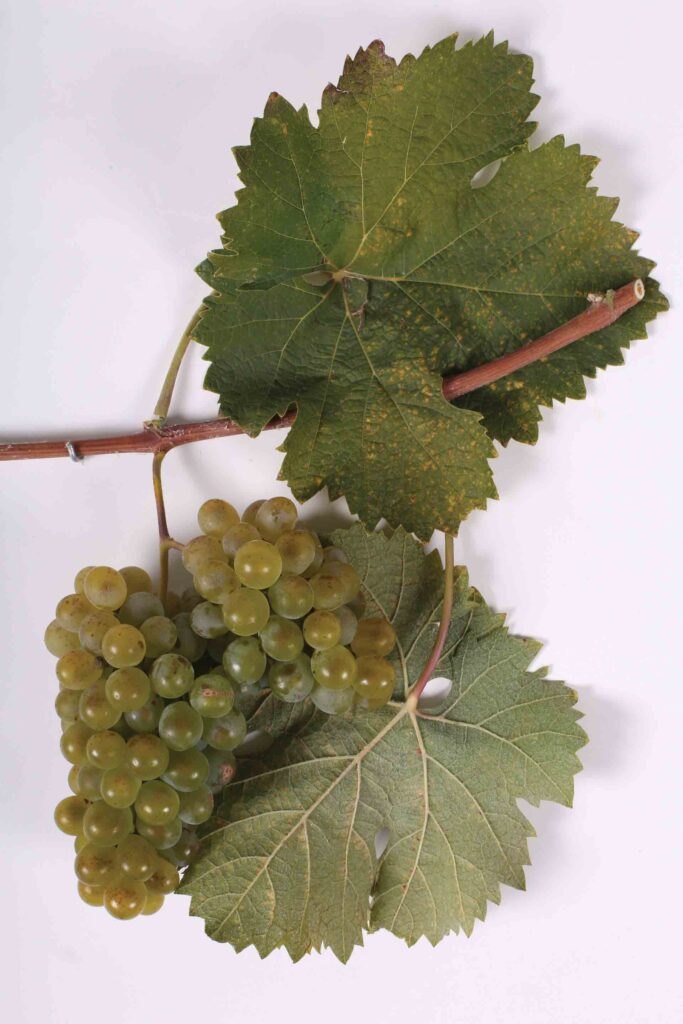
ქართული ადგილობრივი თეთრყურძნიანი ვაზის ჯიშია, მიეკუთვნება იმერეთის ვაზის ჯიშთა ჯგუფს და გავრცელებულია იმერეთის მევენახეობა-მეღვინეობის ზონაში. აკადემიკოს ივანე ჯავახიშვილის განმარტებით „კრახუნა“ მარცვლის თვისების გამომხატველი იმერული წარმოშობის სიტყვაა – დასავლეთ საქართველოში ამბობენ: „მარცვალი პირში სკდება, კრახუნობს“.
ჯიში ხასიათდება საშუალო მოსავლიანობით (საშუალოდ 6-7 ტ/ჰა) და სხვა ადგილობრივ ჯიშებთან შედარებით ნაადრევი სიმწიფით. ყურძნის წვენში შაქრიანობა 21-23 %, ხოლო მჟავიანობა 7,5-8,5 გ/ლ ფარგლებშია.
კრახუნა მაღალი ხარისხის საღვინე ვაზის ჯიშია: კლასიკური (ევროპული) ტექნოლოგიით დაყენებული ღვინო მოყვითალო-ჩალისფერია, ხასიათდება სისრულით და სასიამოვნო გემოთი, ხოლო იმერული ტექნოლოგიით დაყენებული ღვინო უფრო მუქად არის შეფერილი და ხასიათდება ჯიშური არომატით, ასევე, შესაძლებელია მაგარი და სადესერტო ღვინოების დამზადება. კრახუნასგან მზადდება ადგილწარმოშობის დასახელების ღვინო “სვირი” (ცოლიკოურთან და ციცქასთან ერთად).
კაპისტონი თეთრი | სინონიმი: კაპისტონი.
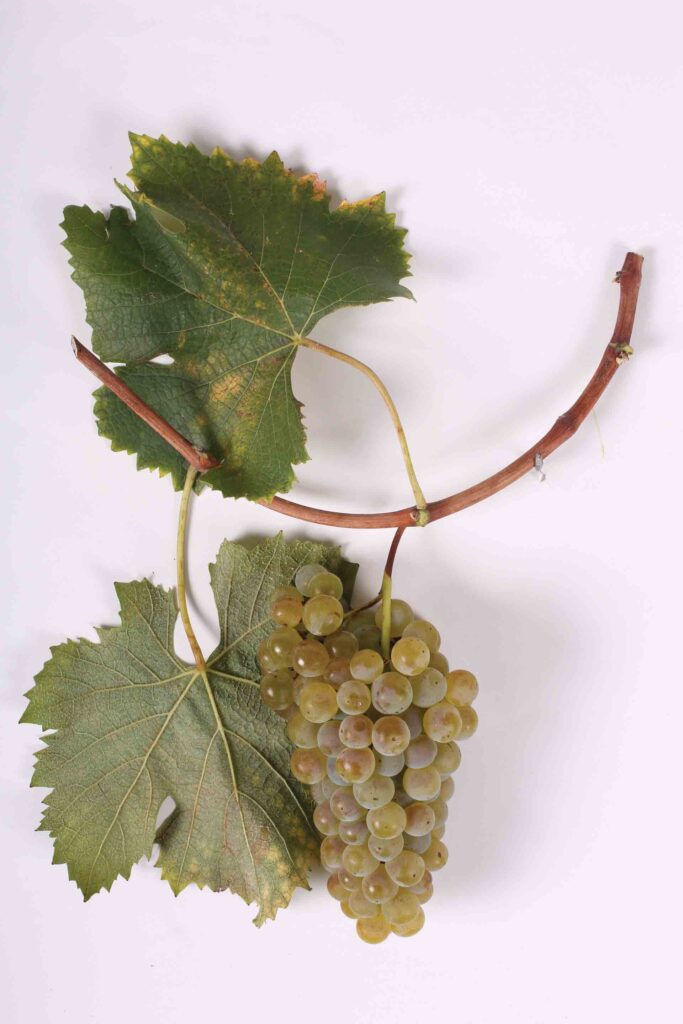
ქართული ადგილობრივი თეთრყურძნიანი ვაზის ჯიშია, მიეკუთვნება იმერეთის ვაზის ჯიშთა ჯგუფს და მცირედ არის გავრცელებული იმერეთის მევენახეობა-მეღვინეობის ზონაში.
ჯიში ხასიათდება საშუალო მოსავლიანობით (საშუალოდ 6-7 ტ/ჰა) და საშუალო-საგვიანო სიმწიფით. კაპისტონი თეთრის სიმწიფის პერიოდი, შუა და ზემო იმერეთის ზონაში, სექტემბრის ბოლოს და ოქტომბრის დასაწყისში დგება. ყურძნის წვენში შაქრიანობა 20-22 %, ხოლო მჟავიანობა 9 გ/ლ ფარგლებშია.
კაპისტონი თეთრი მაღალი ხარისხის საღვინე ვაზის ჯიშია. კლასიკური (ევროპული) და იმერული ტექნოლოგიით დაყენებული კაპისტონის ღვინო ხასიათდება ორიგინალური შეფერვით, სიხალისით, ალკოჰოლის ნორმალური შემცველობით და მაღალი საგემოვნო მაჩვენებლებით. განსაკუთრებით გამოირჩევა კაპისტონი თეთრისგან დამზადებული ცქრიალა ღვინო, დამახასიათებელი მდიდარი ბუკეტით, ნაზი გემოთი და სასიამოვნო, ხალისიანი მჟავიანობით.
კუნძა | სინონიმი: კუმსი
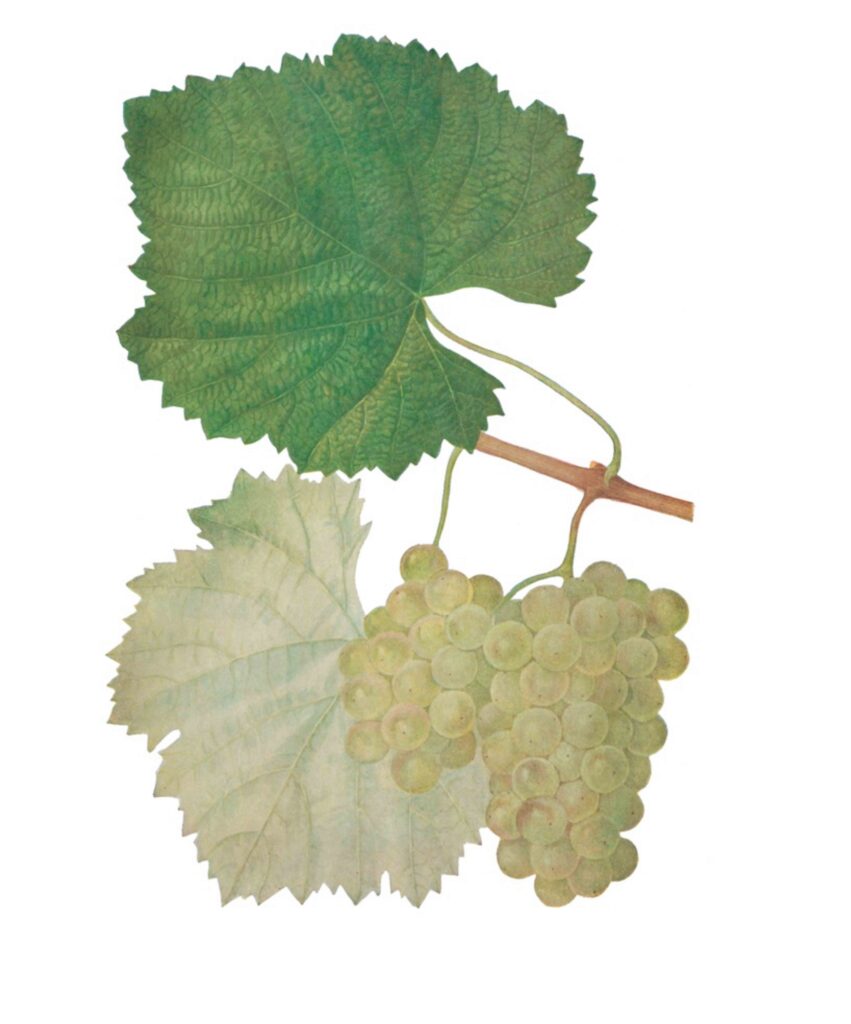
ქართული ადგილობრივი თეთრყურძნიანი ვაზის ჯიშია. მიეკუთვნება იმერეთის ვაზის ჯიშთა ჯგუფს და მცირედ არის გავრცელებული იმერეთის მევენახეობა-მეღვინეობის ზონაში. სახელწოდება „კუნძა“, „კუმსი“ ჯიშს მიღებული აქვს მტევნების მეტად კუმსი აგებულების გამო.
ჯიში ხასიათდება საშუალო ან საშუალოზე მაღალი მოსავლიანობით (საშუალოდ 7-9 ტ/ჰა) და საშუალო-საგვიანო სიმწიფით. კუნძას სიმწიფის პერიოდი, იმერეთის ზონაში, ოქტომბრის პირველ ნახევარში დგება. ყურძნის წვენში შაქრიანობა 20-22 %, ხოლო მჟავიანობა 7,5-9,0 გ/ლ ფარგლებშია.
კუნძა მაღალი ხარისხის საღვინე ვაზის ჯიშია, ღვინო გამოირჩევა კარგად გამოხატული ჯიშური არომატით და სასიამოვნო მჟავიანობით.
ოცხანური საფერე
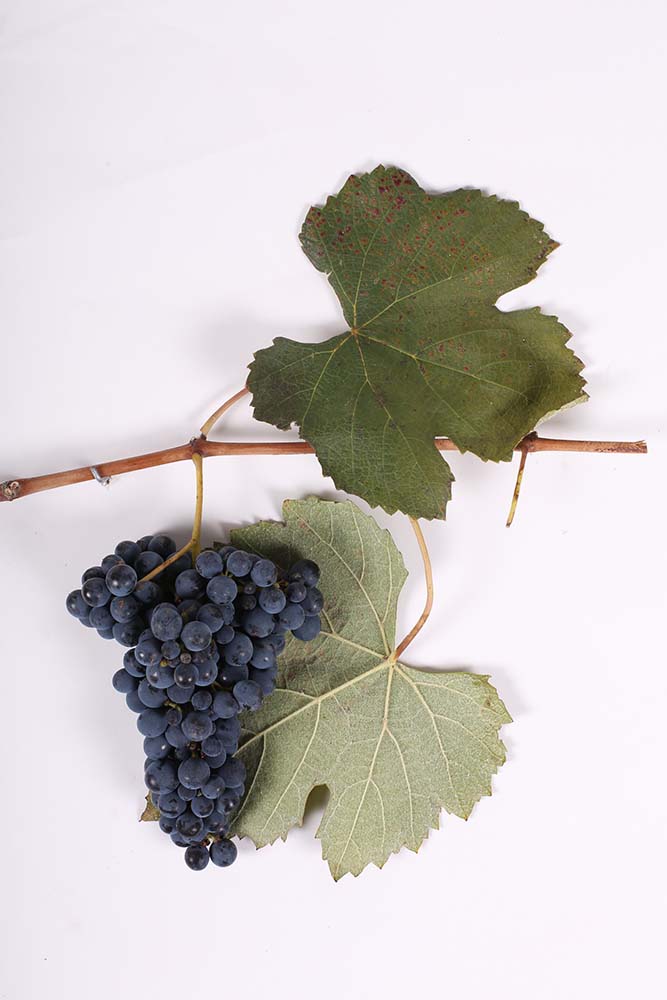
ქართული ადგილობრივი წითელყურძნიანი ვაზის ჯიშია და გავრცელებულია იმერეთის მევენახეობა-მეღვინეობის ზონაში. ჯიში ხასიათდება საშუალო მოსავლიანობით (საშუალოდ 6-7 ტ/ჰა) და საგვიანო სიმწიფით. ოცხანური საფერეს სიმწიფის პერიოდი, იმერეთის ზონაში ოქტომბრის ბოლოს დგება. ყურძნის წვენში შაქრიანობა 20-23 %, ხოლო მჟავიანობა 9-10 გ/ლ ფარგლებშია.
ოცხანური საფერე მაღალი ხარისხის საღვინე ვაზის ჯიშია. გამოიყენება ინტენსიურად შეფერილი წითელი ღვინის დასამზადებლად. ღვინო გამოირჩევა ჰარმონიულობით, კარგად გამოსახული ჯიშისთვის დამახასიათებელი არომატით და დაძველების მაღალი პოტენციალით.
ძელშავი | სინონიმი: ძველშავი
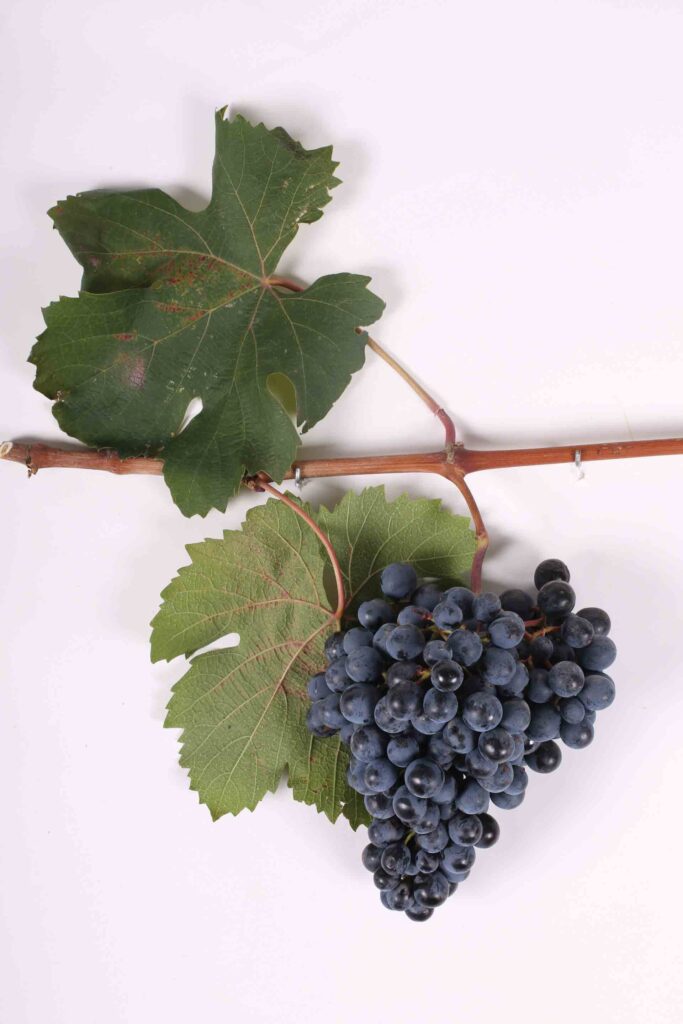
ქართული ადგილობრივი წითელყურძნიანი ვაზის ჯიშია, მიეკუთვნება იმერეთის ვაზის ჯიშთა ჯგუფს და გავრცელებულია იმერეთის და რაჭა-ლეჩხუმის მევენახეობა-მეღვინეობის ზონაში. საგულისხმოა, რომ, აკადემიკოს ივანე ჯავახიშვილის განმარტებით, ჯიშის დასახელების შემადგენელი სიტყვა „ძელი“ დაახლოებით ჩვ.წ. VI საუკუნემდე ფეხზე მდგომ მოუჭრელ ხეს ნიშნავდა, ხოლო „შავი“ ვაზის ერთწლიანი რქების მოყავისფრო შეფერვის მახასიათებელი უნდა ყოფილიყო. შემდგომ პერიოდში, „ძელი“ მოჭრილი ხის გამომხატველი სიტყვა გახდა. აღნიშნულიდან გამომდინარე, ძელშავი, ერთ-ერთ უძველეს, სავარაუდოდ VI საუკუნეზე უფრო ადრინდელ ჯიშად უნდა იქნას მიჩნეული.
ჯიში ხასიათდება საშუალოზე მაღალი მოსავლიანობით (საშუალოდ 8-10 ტ/ჰა) და საგვიანო სიმწიფით – იმერეთის მევენახეობა-მეღვინეობის ზონაში ყურძნის კრეფა სექტემბრის ბოლო რიცხვებში იწყება. ყურძნის წვენში შაქრიანობა 20-21 %, ხოლო მჟავიანობა 7,5-9,0 გ/ლ ფარგლებშია. ძელშავისაგან ღია წითელი-მოვარდისფრო შეფერილობის, ხალისიანი ღვინო დგება.
მგალობლიშვილი
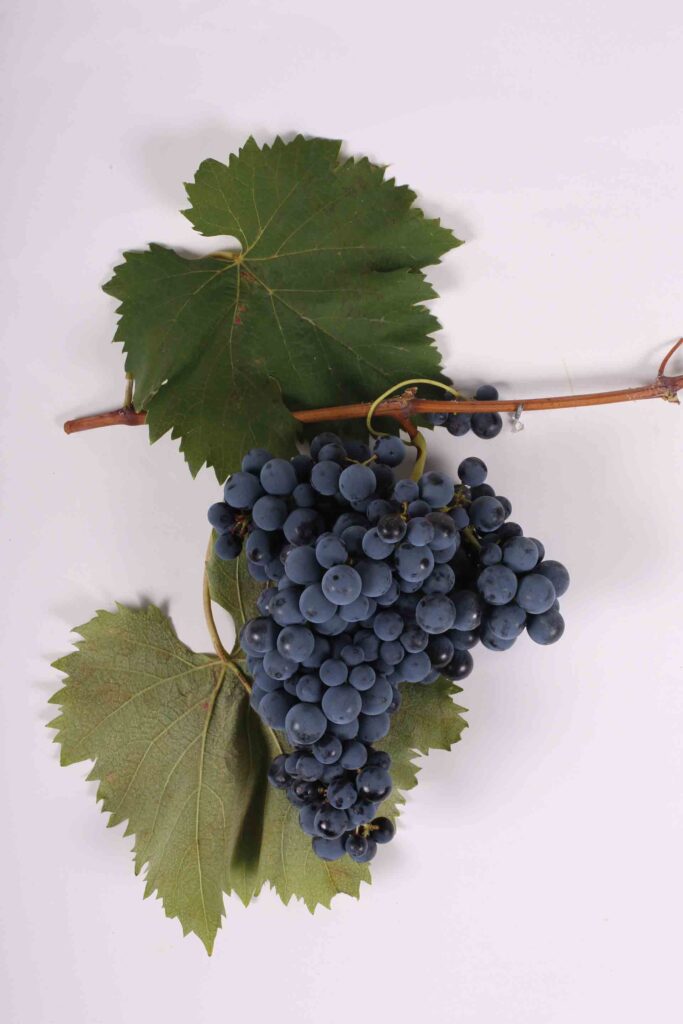
ქართული ადგილობრივი წითელყურძნიანი ვაზის ჯიშია, მიეკუთვნება იმერეთის ვაზის ჯიშთა ჯგუფს. ჯიში ხასიათდება საშუალო ან საშუალოზე მაღალი მოსავლიანობით (საშუალოდ 7-8 ტ/ჰა), საგვიანო სიმწიფით – იმერეთის მევენახეობა-მეღვინეობის ზონაში ყურძენი ოქტომბრის დასაწყისში მწიფდება. ყურძნის წვენში შაქრიანობა 21-23 %, ხოლო მჟავიანობა 7,5-8,5 გ/ლ ფარგლებშია. მგალობლიშვილი საღვინე მიმართულების ვაზის ჯიშია.
თანამედროვე სამეცნიერო კვლევების (Sargolzaei et al., 2021) თანახმად მგალობლიშვილი შეფასებული იქნა მევენახეებისათვის კარგად ცნობილი სოკოვანი დაავადების – ჭრაქის (Plasmopara viticola) მიმართ მაღალი გამძლების ჯიშად.
ადანასური | სინონიმი: მაღლარი
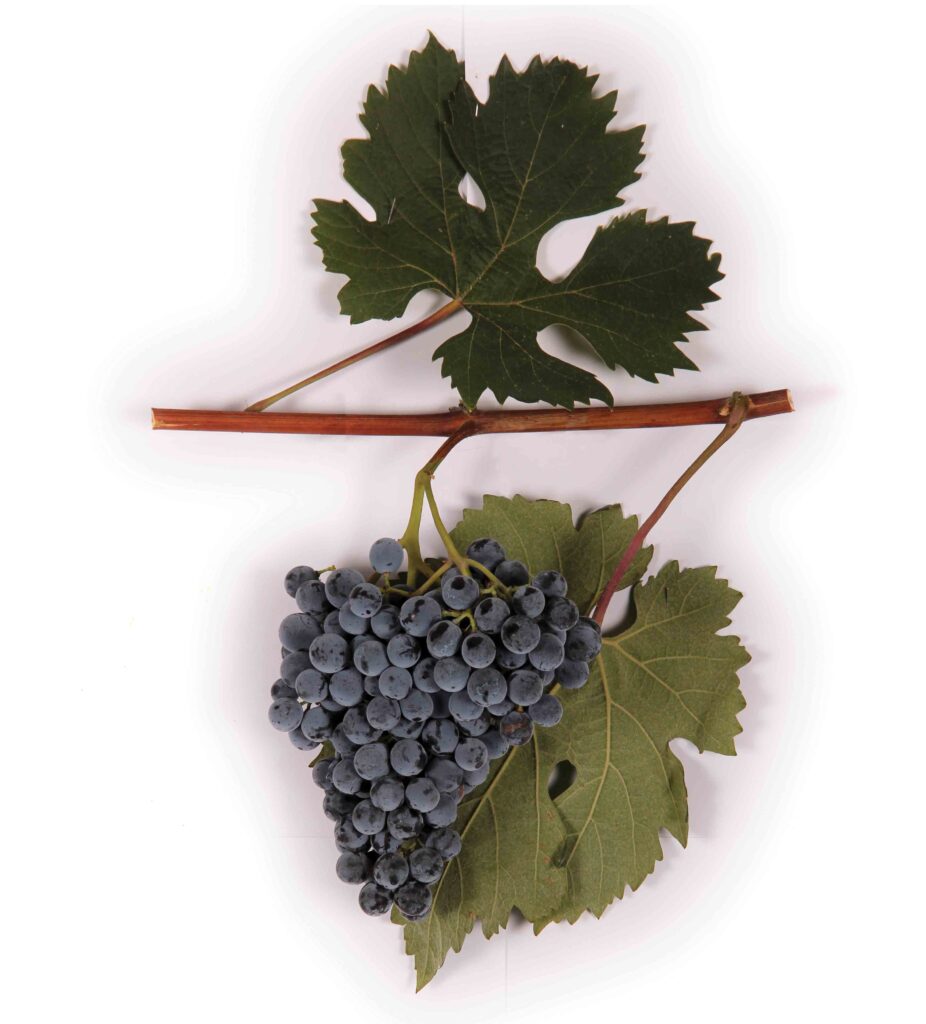
ქართული ადგილობრივი წითელყურძნიანი ვაზის ჯიშია. მიეკუთვნება იმერეთის ვაზის ჯიშთა ჯგუფს. ჯიში ხასიათდება მაღალი მოსავლიანობით (11-12 ტ/ჰა) და საგვიანო სიმწიფით – იმერეთის ზონაში ყურძენი ოქტომბრის დასაწყისში მწიფდება. ყურძნის წვენში შაქრიანობა 21-23 %, ხოლო მჟავიანობა 8,1-10,6 გ/ლ ფარგლებშია.
ადანასური საღვინე მიმართულების ვაზის ჯიშია, ღვინო გამოირჩევა სასიამოვნო, ცოცხალი გემოთი.
გამოყენებული ლიტერატურა:
- ნ. კეცხოველი, მ. რამიშვილი, დ. ტაბიძე, 1960. საქართველოს ამპელოგრაფია.
- მ. რამიშვილი, 1986. ამპელოგრაფია.
- Sargolzaei M., Rustioni L., Cola G., Ricciardi V., Bianco P.A., Maghradze D., Failla O., Quaglino F., Toffolatti S.L. and De Lorenzis G., 2021. Georgian Grapevine Cultivars: Ancient Biodiversity for Future Viticulture. https://www.frontiersin.org/articles/10.3389/fpls.2021.630122/full
- ნ. ცერცვაძე ნ., 1987. საქართველოში გავრცელებული ვაზის ჯიშების სარკვევი.
- Деметрадзе В.С., Кварацхелия Ф.К., Миротадзе А.В., 1963. Аданасури. В: Ампелография СССР, Малораспространённые сорта винограда, Отв. Ред. Негруль А.М
ფოტოები: 1. 2. 3. 4. 6. 7. 8. 9. – “ღვინის ეროვნული სააგენტო”.
ფოტო: 5. – ნ. კეცხოველი, მ. რამიშვილი, დ. ტაბიძე, 1960. საქართველოს ამპელოგრაფია
Imereti – a unique region of viticulture-winemaking and Imeretian grape varieties
Keti Jurkhadze | Director of “Imeretian Wine Association”: Viticulture and winemaking have been around in Imereti since time immemorial and were always an important part of local agriculture. The second part of the 19th century brought a broader outlook for local viticulture, and the industry has been gradually developing since then. Both the acreage of vineyards and the number of wineries are on the rise. There is more interest in Imeretian wines in the world markets. Their unique and lively taste, fruity, flower, and citrus aromas are attracting more and more attention.
The revival of forgotten grape varieties and their use in making wine has started a couple of years ago in Imereti. Lesser known Dzelshavi, Kundza, and Mgaloblishvili are slowly appearing next to well-known grape varieties such as Tsitska, Tsolikouri, Krakhuna, and Otskhanuri Sapere. For the moment, Dzelshavi remains one of the more known ones among the rare varieties. Dzelshavi wine is earning gold and silver medals in local as well as international competitions, which shows that Imereti and its rare wines have a bright future.
At the international competition held in Great Britain this year, the jury made up of international wine masters and experts, awarded “Solomone” winery’s Dzelshavi with a silver medal. This wine is already sold on the British market. This year again, “Zodi” winery’s Dzelashavi won a silver medal in the “International Qvevri Wine Competition” held together with Italian wine experts. Dzelshavi is an exceptional grape variety and it makes a special wine – light, with aromas of berry and black plum, soft and sophisticated taste. It is a memorable wine.
I believe that Imereti will add a lot of novelty to the world market of wine and establish itself in the winemaking industry.
Irma Mdinaradze | Agriculture Ph.D., Associate professor. Chief Specialist, Viticulture analysis and regulation department, LEPL National Wine Agency: Imereti is one of the most original, interesting, and distinct viticulture-winemaking regions, characterized by a wide variety of terrain, agroecological conditions, microzones, and grape varieties. According to the scientific literature (Ampelography of Georgia – N. Ketskhoveli, D. Tabidze, M. Ramishvili, 1960), the Imereti region includes 85 autochthonous grape varieties. However, as of today, the following grape varieties are predominant in the viticulture-winemaking zone of Imereti:
Tsolikouri | Synonyms: Obchuri Tsolikouri, Tsolikauri, Melkos Tsolikouri, Kokhidzes Tsolokouri, Kobakhidzes Tsolikouri.

Tsolikouri is a leading Imeretian white grape variety that is widespread not only in the Imeretian region of viticulture-winemaking but throughout the whole of Western Georgia (Racha-Lechkhumi, Guria, Samegrelo, Adjara, and Abkhazia).
The variety is characterized by average or higher than average productivity (7-10 t/ha), durability against some fungal diseases (powdery mildew), and late ripening. In West Georgia, Tsolikouri reaches maturity in the second half of October. Depending on the zone, the sugar content in grape juice is 19-25%, while the acidity stays within 7,5-9,5 g/l.
Tsolikouri is a high-quality grape, which can be used to make a wide variety of wines, using classic (European), as well as Imeretian technology. Tsolikouri is used to produce designation of origin wines, namely dry “Sviri” (together with Tsitska and Krakhuna) and semi-sweet “Tvishi”.
Tsitska | Synonyms: Shanti, Mamali Tsitska.

Tsitska is a Georgian white grape variety that belongs to the group of Imeretian grape varieties and is widespread in the Imereti zone. The famous historian, Ivane Javakhishvili, connects the name of this breed with the names of the villages of its probable origin – Tsitskhe, Tsitskiuri.
The variety is characterized by average or higher than average productivity (6-9 t/ha) and late ripening. In the zone of Imereti, Tsitka reaches maturity in the second half of October. The sugar content in grape juice is 18-25%, while the acidity is within 6,9-10,5 g/l.
Tsolikouri is a high-quality grape, which can be used to make a wide variety of wines, using classic (European), as well as Imeretian technology. The wine has a delicate and harmonious taste and liveliness. It is one of the most used grape varieties in sparkling wine production. Tsitka is used to produce the designation of origin wine “Sviri” (together with Tsolikouri and Krakhuna).
Krakhuna

A white Georgian grape variety, that belongs to the group of Imeretian grape varieties and is widespread in the Imereti viticulture-winemaking zone. According to Ivane Javakhishvili, the “krakhuna” is an Imeretian word used to describe the characteristic of the grape berry, as in the phrase used by many in West Georgia: “The berry explodes in the mouth, it cracks” (“krakhunobs” – in Georgian).
The variety is characterized by average productivity (6-7 t/ha) and earlier ripening, compared to other local varieties. The sugar content in grape juice is 21-23%, while the acidity is within 7,5-8,5 g/l.
Krakhuna is a high-quality grape: when used in classic (European) technology, its wine is yellowish-straw in color, complete, with a pleasant taste, while made using Imeretian technology, the wine is darker and characterized by varietal aromas. This variety can also be used to make fortified and dessert wines. Krakhuna is used to produce the designation of origin wine “Sviri” (together with Tsolikouri and Tsitska).
Kapistoni Tetri | Synonym: Kapistoni.

A white Georgian grape variety, that belongs to the group of Imeretian grape varieties and is spread in the viticulture-winemaking zone of Imereti.
The variety is characterized by average productivity (6-7 t/ha) and an average to late ripening. In the mid and higher Imereti zone, the grape reaches its maturity at the end of September, and the beginning of October. The sugar content in grape juice is 20-22%, while the acidity is around 9 g/l.
Kapistoni White is a high-quality grape variety. Wine made from Kapistoni using both classic (European) and Imeretian technologies is characterized by an original color, liveliness, normal levels of alcohol, and high taste indicators. Sparkling wine made from Kapistoni is especially attention-worthy, with its rich bouquet, delicate taste, and pleasant, lively acidity.
Kundza | Synonym: Kumsi

A white Georgian grape variety, that belongs to the group of Imeretian grape varieties and is spread in the viticulture-winemaking zone of Imereti. The name “Kundza”, “Kumsi” comes from the especially dense structure of the bunch (“kumsi” in Georgian means “dense”).
The variety is characterized by average or higher than average productivity (7-9 t/ha) and an average to late ripening. In the zone of Imereti, Kundza reaches maturity in the first half of October. The sugar content in grape juice is 20-22%, while the acidity is within 7,5-9,0 g/l.
Kundza is a high-quality wine grape. The wine has well-expressed varietal aromas and pleasant acidity.
Otskhanuri Sapere

Local Georgian red grape variety, spread in the viticulture-winemaking zone of Imereti. The variety is characterized by average productivity (6-7 t/ha) and late ripening. In the Imereti zone, Otskhanuri Sapere reaches its maturity at the end of October. The sugar content in grape juice is 20-23%, while the acidity is within 9-10 g/l.
Otskhanuri Sapere is a high-quality wine grape. It is used to produce an intensely red-colored wine. It is harmonious, with well-expressed varietal aromas, and high aging potential.
Dzelshavi | Synonym: Dzvelshavi

A Georgian red grape variety belongs to the Imereti grape variety group and is widespread in the Imereti and Racha-Lechkhumi viticulture-winemaking zone. According to Ivane Javakhishvili, the constituent word “dzeli” in the name of the variety dates back to around the 6th century BC and translates to an uncut tree standing on its feet, while “shavi” (“black” in Georgian), most probably came from the brownish color of the one-years stems of the vine. Later, the word “dzeli” changed its meaning to denote a felled tree trunk. Based on the above, Dzelshavi should be considered one of the oldest varieties, dating back to earlier than the 6th century.
The variety is characterized by a higher than average productivity (8-10 t/ha) and late ripening – in the Imereti viticulture and winemaking zone, grape harvest begins at the end of September. The sugar content in grape juice is 20-21%, and acidity is within 7.5-9.0 g/l.
Dzelshavi makes a light red-pink, cheerful wine.
Mgaloblishvili

A Georgian red grape variety belongs to the Imereti grape variety group. The variety is characterized by an average or above-average yield (7-8 t/ha), early ripening – in the Imereti viticulture-winemaking zone, the grape reaches maturity in early October. Sugar content in grape juice is 21-23%, and acidity is within 7.5-8.5 g/l. Mgaloblishvili is a wine grape variety.
According to modern scientific studies (Sargolzaei et al., 2021), Mgaloblishvili was evaluated as a variety with high resistance to the well-known fungal disease – powdery mildew (Plasmopara viticola).
Adanasuri | Synonym: Maghlari

It is a Georgian red grape variety. It belongs to the group of Imeretian grape varieties. The variety is characterized by high productivity (11-12 t/ha) and early ripening – in the Imereti zone, grapes reach maturity at the beginning of October. Sugar content in grape juice is 21-23%, and acidity is within 8.1-10.6 g/l. It is a wine grape variety. The wine has a pleasant, lively taste.
It is a grape variety of the Adanasuri wine region, the wine has a pleasant, lively taste.

